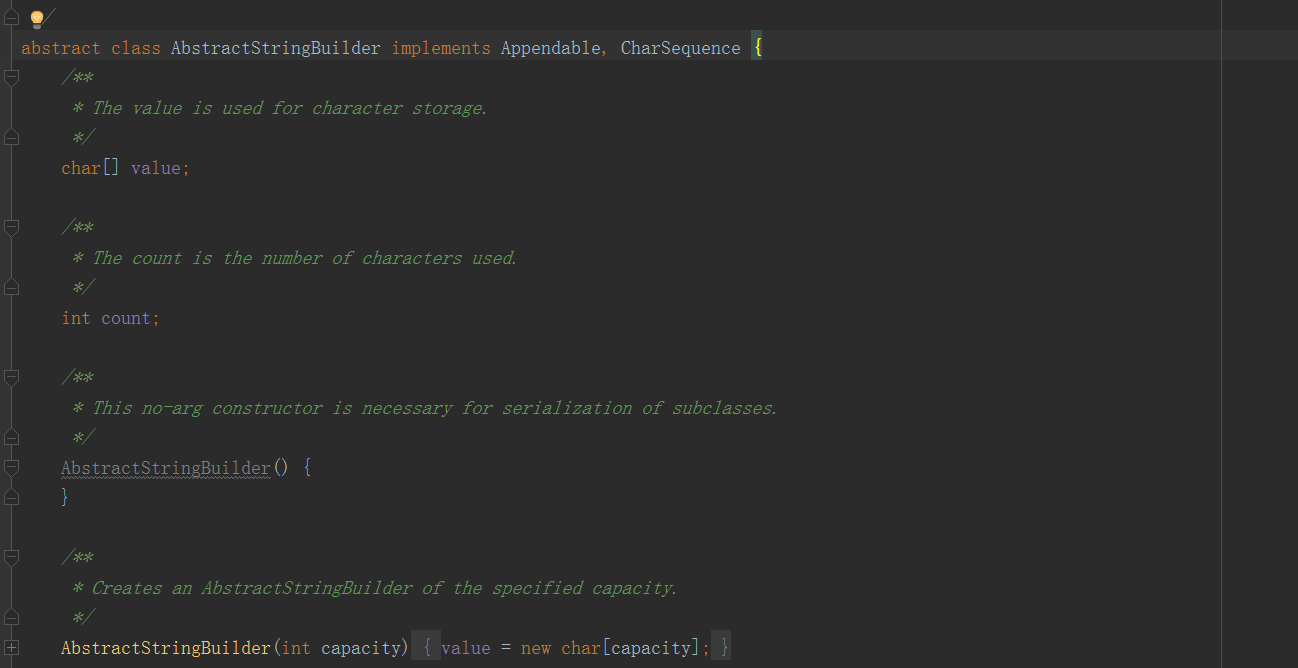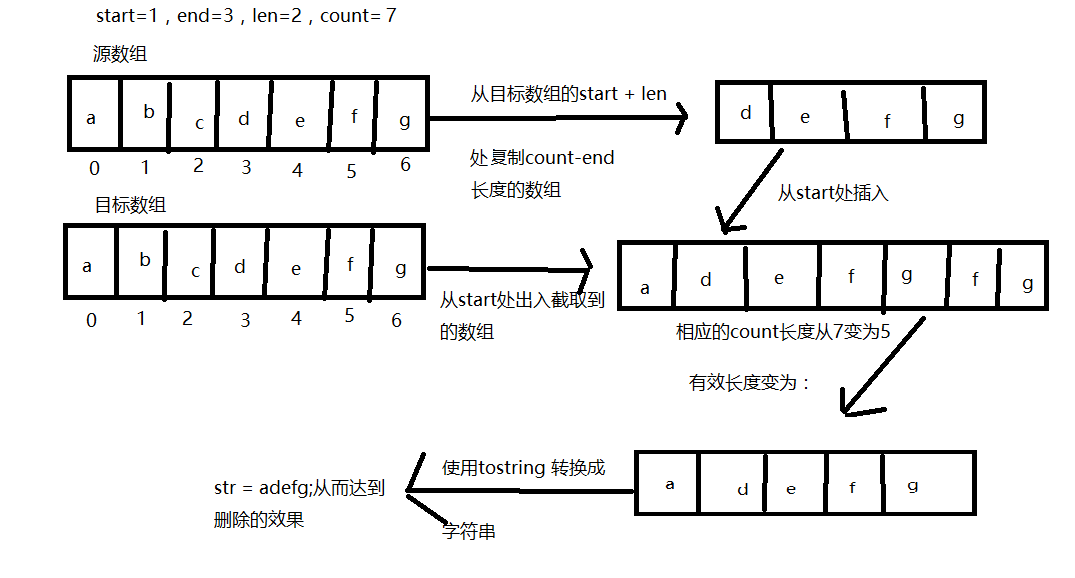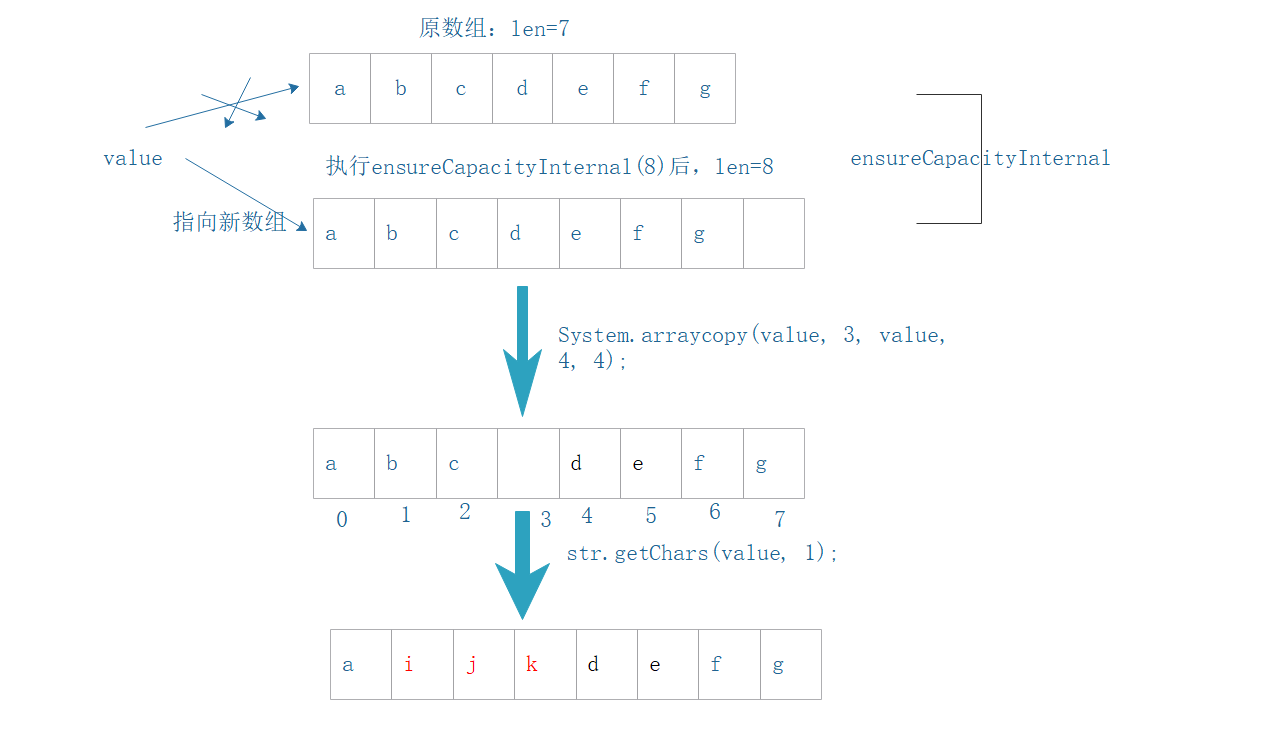AbstractStringBuilder 在java.lang 包中,是一个抽象类,实现 Appendable 接口和 CharSequence 接口,这个类的诞生是为了解决 String 类在创建对象的时候总是创建新的对象的问题的。AbstractStringBuilder 有两个子类,分别是 StringBuilder 和 StringBuffer,这两个类的区别将会在下面说到。
从源码中可以看出来,AbstractStringBuilder类和String类是非常相似的,设计的思想可以说是一模一样,其内部维护的都是一个char类的数组。唯一的区别在于这个数组的修饰符不一样,String类维护的是一个不可变的数组,而后者维护的则是一个可变的数组。
AbstractStringBuilder源码:
String类源码:

AbstractStringBuilder 的应用场景
该类主要适用于在短时间内创建大量字符串的场景,比如在一个循环体中需要拼接一个非常长的字符串时,可以考虑 AbstractStringBuilder 的实现类来创建字符串,这样不管这个字符串有多长最终都只会生成一个对象,但是如果在循环体中使用String来创建字符串时,此时会创建出大量的对象,这样不仅影响性能,同时如果内存较小的情况下很容易发生oom异常。下面列举一下使用的建议:
public class Test { public static void main(String[] args) { /** * 不建议这样做: * 耗时:30726 */ String str = ""; long start = System.currentTimeMillis(); for (int i = 0; i < 100000; i++) { str += i; } long end = System.currentTimeMillis(); System.out.println("耗费时间:" + (end - start)); /** * 推荐做法: * 耗时:2 */ start = System.currentTimeMillis(); StringBuilder builder = new StringBuilder(); for (int i = 0; i < 100000; i++) { builder.append(i); }
str = builder.tostring(); end = System.currentTimeMillis(); System.out.println("耗费时间:" + (end - start)); } }
上面的代码中分别将 100000 拼接成一个字符串,记录所需时间,总共运行了三次,第一种直接使用String来拼接三次耗时均在3000毫秒以上,第二种使用StringBuilder方式拼接字符串时三次最高的一次才为15毫秒,通过对比发现使用StringBuilder比String直接拼接性能高了非常多。
虽然在拼接大字符串是StringBuilder比String有着明显的优势,但是这并不意味这StringBuilder可以完全替代String,比如在创建比较小的字符串时使用String来创建就足够了,如果还是继续使用StringBuilder来创建,这样反而会对程序的性能有一定的影响,毕竟StringBuilder是一个对象,大量使用的话也会占内存。所以在使用字符串的时候要考虑清楚那种方式比较合理,这样才有助于提高程序的速度。
AbstractStringBuilder 常用api
AbstractStringBuilder的 常用api跟String常用的api几乎是一样的,而且其内部的实现方法也可以说是大同小异,所以就不再这里赘述了,只要了解了System类的静态方法 arraycopy(Object src, int srcPos,Object dest, int destPos,int length) 即可。里面的几乎所有的方法都用到了这个方法,是该类的核心。
1.getChars(int srcBegin, int srcEnd, char[] dst, int dstBegin)
该方法是将AbstractStringBuilder 的value数组 srcBegin 位置开始 srcEnd - srcBegin 长度的数组 复制到 dst 数组 dstBegin 开始的位置中;
public void getChars(int srcBegin, int srcEnd, char[] dst, int dstBegin) { if (srcBegin < 0) throw new StringIndexOutOfBoundsException(srcBegin); if ((srcEnd < 0) || (srcEnd > count)) throw new StringIndexOutOfBoundsException(srcEnd); if (srcBegin > srcEnd) throw new StringIndexOutOfBoundsException("srcBegin > srcEnd");
//value: AbstractStringBuilder 中维护的 char类型数组 System.arraycopy(value, srcBegin, dst, dstBegin, srcEnd - srcBegin); }
大概流程是这样子的:

第一次画图有点难看,将就着看。。。
2、AbstractStringBuilder append(String str)
该方法是在当前的字符串的后面添加字符串 str。该方法有非常多重载的方法,方法体大都一样,所以其他的就不一一说明了。
public AbstractStringBuilder append(String str) { if (str == null) return appendNull(); int len = str.length(); //将value数组长度增加 len 个长度,以便后面将字符串放入到数组中 ensureCapacityInternal(count + len); //将字符串 str 放入到 数组 value 中,从数组后面添加 //count:当前 字符串长度 str.getChars(0, len, value, count); //字符串长度增加 len count += len; return this; }
3、public AbstractStringBuilder delete(int start, int end)
该方法是从当前字符串中的 start位置开始删除字符串删到 end 位置;
public AbstractStringBuilder delete(int start, int end) { /** * 删除边界检查 */ if (start < 0) throw new StringIndexOutOfBoundsException(start); if (end > count) end = count; if (start > end) throw new StringIndexOutOfBoundsException(); //删除的长度 int len = end - start; if (len > 0) { //注意:删除方法并不会重新创建一个新的数组,而是在原来的数组中将 //需要删除的字符移动数组的最后面,然后将字符串的长度减少 len 个长度 //从而达到删除的效果,这一点需要的注意,我在看代码的花了一点时间才弄明白 System.arraycopy(value, start+len, value, start, count-end); //字符串长度减少 len 个长度 count -= len; } return this; }
举个例子,加入当前的字符串为 abcdefg , 然后执行删除操作,开始位置start为1,结束为止end为3,count为7,len为2,数组复制的大致流程如下:
值得注意的是,在删除时数组长度并不会减少,这个跟我之前想的有很大的出入,减少的是count的值,即字符串的长度。
4、public AbstractStringBuilder replace(int start, int end, String str)
该方法是指当前字符串start 到 end 区间的字符串替换成 str 字符串。
public AbstractStringBuilder replace(int start, int end, String str) { if (start < 0) throw new StringIndexOutOfBoundsException(start); if (start > count) throw new StringIndexOutOfBoundsException("start > length()"); if (start > end) throw new StringIndexOutOfBoundsException("start > end"); if (end > count) end = count; //替换字符串长度 int len = str.length(); //替换后当前字符串长度 int newCount = count + len - (end - start); //根据替换后字符串长度调整 char 数组的大小,避免数组下标溢出异常 ensureCapacityInternal(newCount); //对扩容后的char数组元素进行移动 System.arraycopy(value, end, value, start + len, count - end); //将替换字符串添加到char数组中 str.getChars(value, start); //修改有效字符串的长度 count = newCount; return this; }
大致的执行流程如下:
加入当前的字符串为 abcdefg,start=1,end=3,替换字符串str为 ijk,则,
第一步:计算出替换字符串后的长度:int newCount = 7 + 3 - (3-1)= 8;
第二步:创建一个newCount 大小的数组,将原数组数据放入到新数组中,新数组多出来的元素默认为 null;
上面两个步骤是在 ensureCapacityInternal(newCount) 方法中完成的。
第三步:执行System.arraycopy(value, end, value, start + len, count - end)方法,该方法是将替换区间的后段数据移到最后面,顺序保持不变;
第四步:将替换字符串放入到新的数组中;
第五步:更新count 变量,该变量使用来记录字符串的长度。
执行流程图:

5、public AbstractStringBuilder insert(int index, char[] str, int offset,int len)
该方法是用来向字符串中插入字符串,index:插入位置;str:插入字符数组;offset字符数组开始开始插入位置;len:插入长度。该方法有非常多的重载的方法,操作流程基本一致,无非是传入是数组的话就调用 arraycopy,是字符串则调用String 的 getChars 方法给数组赋值。
public AbstractStringBuilder insert(int index, char[] str, int offset, int len) { //检查数组是否越界 if ((index < 0) || (index > length())) throw new StringIndexOutOfBoundsException(index); if ((offset < 0) || (len < 0) || (offset > str.length - len)) throw new StringIndexOutOfBoundsException( "offset " + offset + ", len " + len + ", str.length " + str.length); //数组扩容 ensureCapacityInternal(count + len); //插入点后段后移 System.arraycopy(value, index, value, index + len, count - index); //将插入数组str放入到value中 System.arraycopy(str, offset, value, index, len); //更新长度 count += len; return this; }
假如value数组为:a,b,c,d,e ,插入数组为:str=f,g,h,index=1,offset=0,len=str.length=3,则count=5,大概执行流程如下:

6、public String substring(int start, int end)
public String substring(int start, int end) { if (start < 0) throw new StringIndexOutOfBoundsException(start); if (end > count) throw new StringIndexOutOfBoundsException(end); if (start > end) throw new StringIndexOutOfBoundsException(end - start); //调用String 构造方法截取 return new String(value, start, end - start); }
StringBuilder 和 StringBuffer 的区别:
1.两者都继承了 AbstractStringBuilder 抽象类。
2.前者不是线程安全的,后者是线程安全的,后者在每个方法都添加了 synchronized 关键字,所以它是线程安全的。
3.两个都是维护一个可变的字符串;
4.在单线程或对安全性不高的程序中,建议使用前者,在多线程中建议使用后者。
总结:
1、AbstractStringBuilder 和 String 的使用方式如出一辙;
2、AbstractStringBuilder 的设计是为了解决String不可变的性质带来的问题的。
3、AbstractStringBuilder 不能完全替代String,具体场景具体分析。